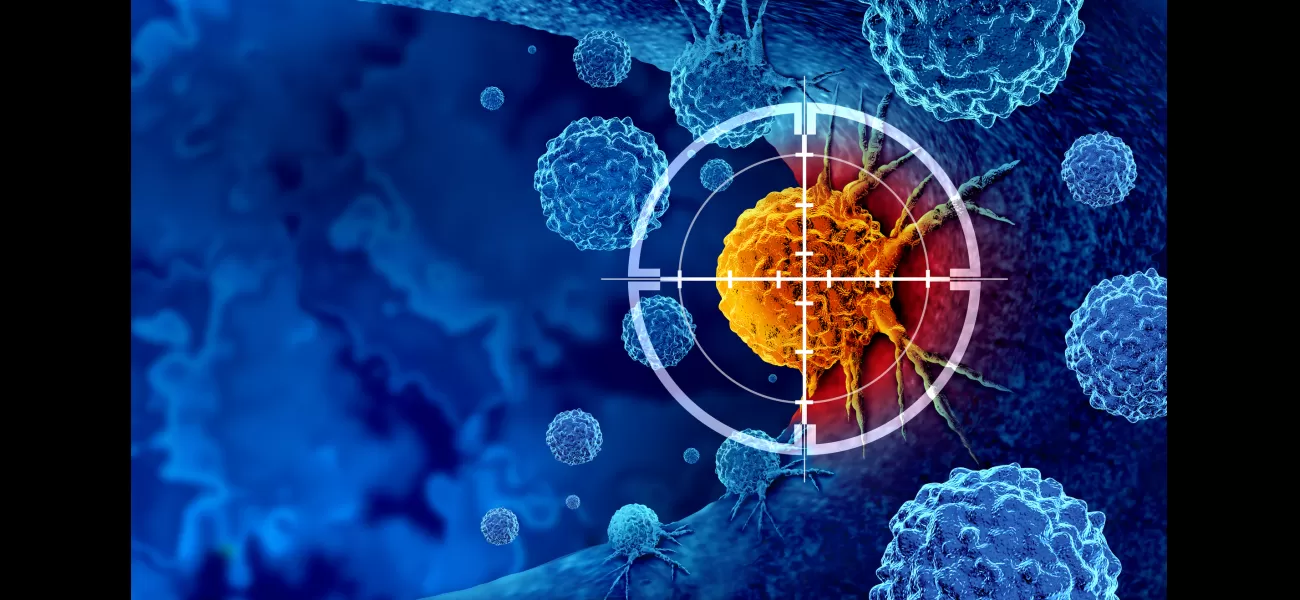Microscopic robots can locate and eliminate cancer cells.
It's not just a fantasy, it's a reality.
July 1st 2024.

It seems like we might finally be entering the realm of science fiction with the latest breakthrough in cancer treatment. Scientists have successfully created tiny robots that have the ability to specifically target and destroy cancer cells. This is great news for patients as it could potentially make treatments much gentler and less invasive.
The team of researchers at the Karolinska Institutet in Sweden have been working tirelessly to develop these nanorobots. They function by activating the 'death receptors' in cancer cells, causing them to shrink and ultimately die. However, the challenge has been to find a way to ensure that the robots only target cancerous cells, while leaving healthy cells unharmed.
In the past, the team had discovered a method of creating minuscule robots from amino acids that could be injected into the body to activate death receptors. It's almost like something out of the 80s movie "Innerspace", except without a tiny Dennis Quaid controlling them. Professor Björn Högberg, who led the study, explains that the peptides in these robots act as a lethal weapon. But administering them as a drug would cause harm to all cells in the body, not just cancer cells. To overcome this, the team has cleverly hidden the weapon inside a nanostructure made from DNA.
Creating these tiny structures from DNA is known as DNA origami, a technique that the team has been working on for years. By combining DNA and peptides, they have finally found a way to create a 'kill switch' that ensures the robots only target cancerous cells. The key to this switch is the pH level - a measure of acidity or alkalinity in a substance. In most parts of the body, the pH level is around 7.4 (neutral), but the areas surrounding tumors tend to be slightly more acidic. This is where the nanorobots become active, killing cancer cells at a pH level of 6.5.
Further testing on mice has shown promising results, with the robots significantly shrinking breast cancer tumors by up to 70%. Lead author Yang Wang explains that they will now need to conduct more tests to see if this method is effective in more advanced cancer models and to determine any potential side effects before it can be tested on humans.
The team's ultimate goal is to make the nanorobots even more specific, able to target different types of cancer. This breakthrough has the potential to revolutionize cancer treatment and make it much more tolerable for patients. We may finally be on the cusp of a future where cancer is no longer a devastating disease.
The team of researchers at the Karolinska Institutet in Sweden have been working tirelessly to develop these nanorobots. They function by activating the 'death receptors' in cancer cells, causing them to shrink and ultimately die. However, the challenge has been to find a way to ensure that the robots only target cancerous cells, while leaving healthy cells unharmed.
In the past, the team had discovered a method of creating minuscule robots from amino acids that could be injected into the body to activate death receptors. It's almost like something out of the 80s movie "Innerspace", except without a tiny Dennis Quaid controlling them. Professor Björn Högberg, who led the study, explains that the peptides in these robots act as a lethal weapon. But administering them as a drug would cause harm to all cells in the body, not just cancer cells. To overcome this, the team has cleverly hidden the weapon inside a nanostructure made from DNA.
Creating these tiny structures from DNA is known as DNA origami, a technique that the team has been working on for years. By combining DNA and peptides, they have finally found a way to create a 'kill switch' that ensures the robots only target cancerous cells. The key to this switch is the pH level - a measure of acidity or alkalinity in a substance. In most parts of the body, the pH level is around 7.4 (neutral), but the areas surrounding tumors tend to be slightly more acidic. This is where the nanorobots become active, killing cancer cells at a pH level of 6.5.
Further testing on mice has shown promising results, with the robots significantly shrinking breast cancer tumors by up to 70%. Lead author Yang Wang explains that they will now need to conduct more tests to see if this method is effective in more advanced cancer models and to determine any potential side effects before it can be tested on humans.
The team's ultimate goal is to make the nanorobots even more specific, able to target different types of cancer. This breakthrough has the potential to revolutionize cancer treatment and make it much more tolerable for patients. We may finally be on the cusp of a future where cancer is no longer a devastating disease.
[This article has been trending online recently and has been generated with AI. Your feed is customized.]
[Generative AI is experimental.]
0
0
Submit Comment





